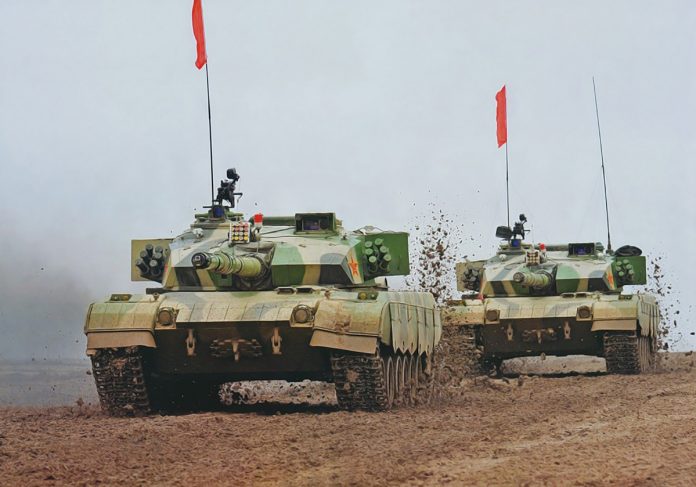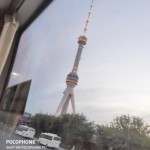Syed Samiullah
The Al-Khalid Tank, literally meaning “The Eternal Tank,” is a Main Battle Tank (MBT) of Pakistan, jointly developed by Pakistan’s Heavy Industries Taxila (HIT) and China’s Norinco, which also refers to it as the VT-1A or MBT-2000. This formidable tank is named in honor of the legendary 7th-century Muslim military commander, Khalid ibn al-Walid (R.A), whose life was marked by numerous victories. Khalid ibn al-Walid, revered as Saifullah (the Sword of Allah), symbolizes the tank’s indomitable strength and strategic prowess.
Historical context and development
In January 1990, a joint development agreement was signed between Pakistan and China for the co-development of Al Khalid MBT. The first Chinese-built prototypes were tested in Pakistan in August 1991, leading to the establishment of a manufacturing plant in Taxila, Pakistan, by 1992. Over the next eight years, Pakistan invested in co-developing a model suitable for its needs and creating a local manufacturing capability.
The Project Director at Heavy Industries Taxila (HIT), Brigadier Nasir Mahmood SI (M), played a crucial role in modifying the tank to accept a foreign-built engine. The tank underwent various prototype evaluations to meet the operational demands of Pakistan’s environment, including high ambient temperatures and fine sand or dust in southern Pakistan’s deserts.
Design and Specifications
The Al-Khalid tank operates with a crew of three and is armed with a 125 mm smooth-bore tank gun that features an automatic reloading system. It incorporates a sophisticated fire-control system and night-fighting equipment. The tank’s current production variant uses a diesel engine and transmission supplied by Ukraine’s KMDB design bureau. The Al-Khalid entered service with the Pakistan Army in 2001, with subsequent upgrades ordered to enhance its capabilities.
Key features and armament
- Main Gun: Al-Khalid is designed with a 125 mm smoothbore gun capable of firing various types of ammunition, including APFSDS (Armor-Piercing Fin-Stabilized Discarding Sabot), HEAT-FS (High-Explosive Anti-Tank), HE-FS, and gun-launched, laser-guided anti-tank guided missiles.
- Secondary Armament: The tank includes a 7.62 mm coaxial machine gun, a 12.7 mm externally mounted air-defense machine gun, and 16 smoke grenade launchers (12 Smoke, 4HE).
- Fire-Control System: The tank features the advanced ISFCS-122B fire-control system, which integrates inputs from multiple sensors to calculate ballistic trajectories in less than one second for precise targeting. It includes automatic target tracking, dual-axis stabilization, a muzzle reference system, and electro-hydraulic power drives for elevation and azimuth control, enabling accurate fire on both stationary and moving targets. Additionally, its automatic ammunition-handling system has a 24-round ready-to-fire magazine, capable of loading and firing at a rate of eight rounds per minute.
- Sights and Night Vision: Dual-magnification thermal imaging sights for both the gunner and commander, integrated with the fire-control system.
- Navigation: Navigation is assisted by an inertial navigation system (INS) and a GPS satellite navigation system.
Mobility and protection
The Al-Khalid tank is powered by a 6TD-2 liquid-cooled diesel engine designed by Ukraine’s Kharkiv Morozov Design Bureau, delivering 1,200 horsepower. This engine configuration allows the tank to achieve a top speed of 72 km/h, with a power-to-weight ratio of 26.66 hp/tonne.
The tank features Modular Composite Armor (MCA) and Explosive Reactive Armor (ERA), along with an overpressure nuclear-biological-chemical defense system, thermal smoke generator, and internal fire suppression system. The Al-Khalid’s armor provides substantial protection against HEAT and APFSDS rounds.
Variants and upgrades
- Al-Khalid I: This upgraded variant has increased ammunition capacity, an enhanced fire-control system, and an improved air conditioning system. It is equipped with the Ukrainian Varta electro-optical jammer and the IBMS “Rebar” digital communications system, developed domestically by HIT and CARE (Centre for Advanced Research in Engineering). It includes a flat-screen display mounted inside the tank that communicates with those of other vehicles, including command posts such as the HIT Sakb. It uses a data link to facilitate secure communication of battlefield information between units, including tank video footage and information from unmanned aerial vehicles (UAVs).
- Al-Khalid II: During the 2016 International Defense Exhibition and Seminar (IDEAS) in Karachi, Pakistani armed forces and Turkish defense industry officials shared some details about the Al-Khalid II main battle tank (MBT) program. This version is said to be a further advanced variant with a redesigned turret, upgraded modular armor package, improved ammunition, and a new power pack developing 1,500 hp.
Operational history
By 1999, HIT was ready to begin production, and the first batch of Al-Khalid tanks was inducted into the Pakistan Army’s 31st Cavalry Regiment in 2001. The Al-Khalid tank was tailored to meet the operational needs of the Pakistan Army, especially considering the harsh climatic conditions of southern Pakistan. Over the years, Pakistan has made significant investments to upgrade the tank’s capabilities, including an order with Ukraine in 2002 for additional engines.
Despite budgetary constraints, HIT has continued to produce and upgrade the Al-Khalid tank, with the latest Al Khalid-I variant inducted into service in July 2020. As of 2024, Pakistan operates over 300 Al-Khalid and 110+ Al-Khalid I tanks, underscoring the tank’s critical role in the nation’s defense strategy.
In summary, the Al-Khalid tank is a testament to Pakistan’s advancements in indigenous defense capabilities and its strategic partnerships. From its inception and development to its operational deployment, the Al-Khalid has evolved to meet the modern battlefield’s demands.
The author is a Research Officer at Rabita Forum International (RFI) and the Associate Editor of the Monthly Interaction.







